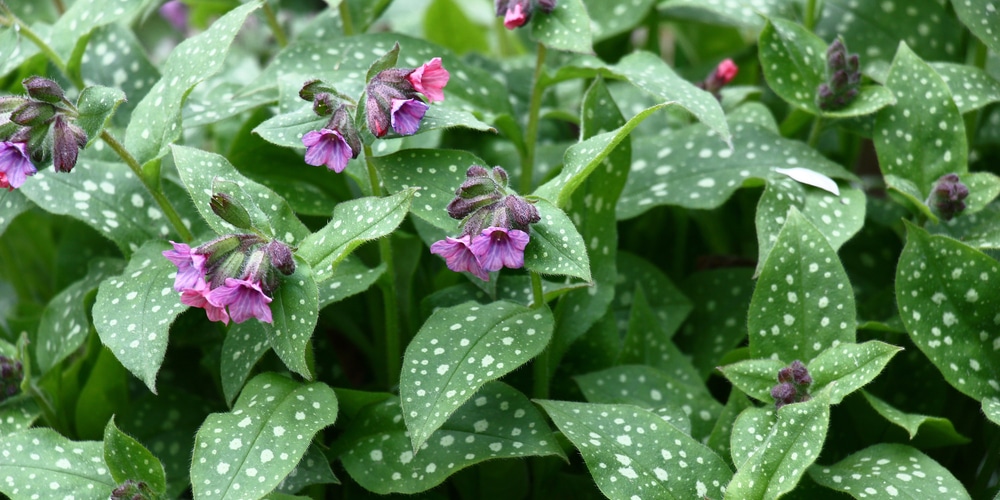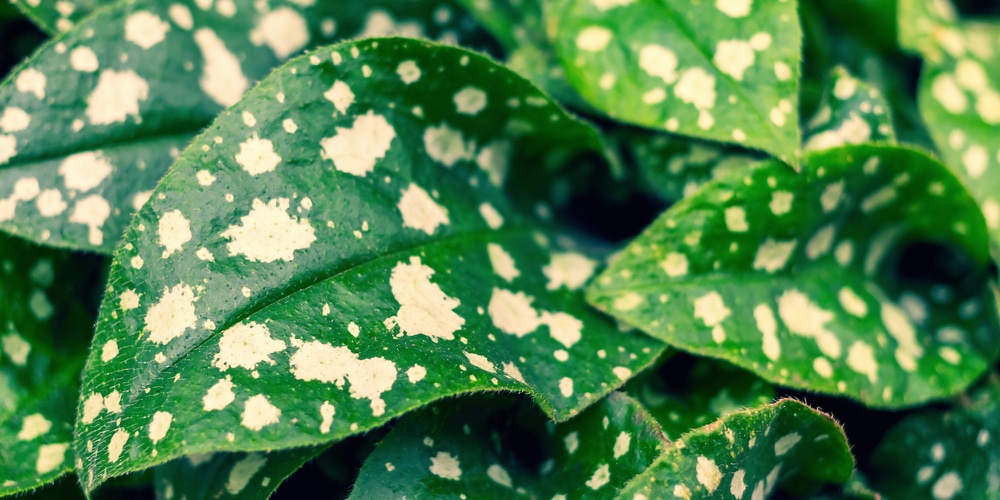If you’re searching for a shade-loving plant to add to your borders or plant along your fence line, you may like to consider a pulmonaria. These beautiful flowering plants come in various colors and have unique lung-shaped leaves.
Let’s look at how to grow and care for a pulmonaria plant.
What is a pulmonaria plant?
Pulmonaria (Pulmonaria spp.) is a perennial flowering herb that belongs to the Boraginaceae family. Native to Europe and Asia, this herb has been widely used for years in folk medicines as it contains rich alkaloid compounds that are said to strengthen the respiratory system. In Japan, it has been traditionally used to treat cough, asthma, pulmonary emphysema, and other respiratory problems.
These plants are commonly referred to as lungwort, as their leaves are shaped like a lung. There are various types of lungwort, and they produce lovely flowers that are purple, blue, pink, or white in the spring and summer months. The plants can grow to a height of between 6 and 12 inches tall and are perfect for growing along a fence line or in a flower border.
Common types of pulmonaria
There are various types of pulmonaria commonly grown in yards across the states. Some of the most popular varieties include pulmonaria ‘Excalibur’, which has silvery-green foliage and lovely blooms that are violet-blue and last throughout the summer months.
Pulmonaria Officinalis is another beautiful variety with unique foliage. The plant has speckled leaves and produces pink and white flowers.
The Pulmonaria ‘Smokey Blue’ is also a popular choice. This plant also has speckled leaves, and the flowers start off pink as buds and open into blue flowers.
How to care for a pulmonaria plant?
Pulmonaria plants can easily grow and thrive in USDA growing zones 3 to 8b. They like milder climates and don’t do well in hot climates. You can find them thriving well in woodland beds, rock gardens or in perennial flower borders. Here are some things you need to know about how to grow pulmonaria or lungwort.
Sunlight Exposure
Like most shade-loving plants, pulmonaria plants will do well only if you grow them in a partially shaded spot. They can also thrive in full sun too; however, it appears that they don’t bloom as profusely in the latter type of exposure.
Soil type and pH range
Pulmonaria plants prefer slightly acidic soil, which means you should maintain a pH level of between 5.5 and 7.0. These plants require well-draining soils that contain organic matter.
Watering needs
Pulmonaria plants grow well in moist but humus-rich soil. You should keep the soil consistently moist from spring to fall while reducing the watering amount in the winter months. These plants will suffer if there’s a drought, but you should also be careful not to overwater your pulmonaria plant, or it may suffer from root rot.
Pulmonaria plants that are growing underneath trees will need to be watered more regularly than those in a flower border. This is because they will be competing with the trees for water.
Fertilization
For most types of pulmonaria plants, feeding with slow-release organic fertilizer is recommended once flowers begin to appear on new shoots. Fertilizing while the plant is in active growth phases will enhance your plant’s blooming prospects.
Temperature and humidity
Pulmonaria thrives in mild climates and will start to grow in the early spring after the last frost. They can be grown in shaded areas and don’t do well in hotter climates. These plants don’t require high humidity, so you won’t need to worry about increasing the humidity around your plants.
Pruning
If you want to encourage your plant to have more flowers, then prune it after it has finished blooming by removing the dead flower heads. You can also remove any dead or damaged leaves in the fall.
Propagation
Pulmonaria plants are propagated mainly by division of their roots. They will produce new shoots with little or no problem once they are lifted from their old pots or flower beds.
Pests
Pulmonaria isn’t generally affected by insect pests, but they can be eaten by slugs.
Conclusion
Pulmonaria plants are quite easy to grow. They will do well in moist but aerated soils, which means that they will need regular watering during the active growth phase. Most varieties of pulmonaria plants can be propagated by the division of roots, and they benefit from being pruned after their blooming period is over.

